Features to consider when choosing the best mini synthesizer
These are some of the features a good mini synth should possess:
Analog vs digital
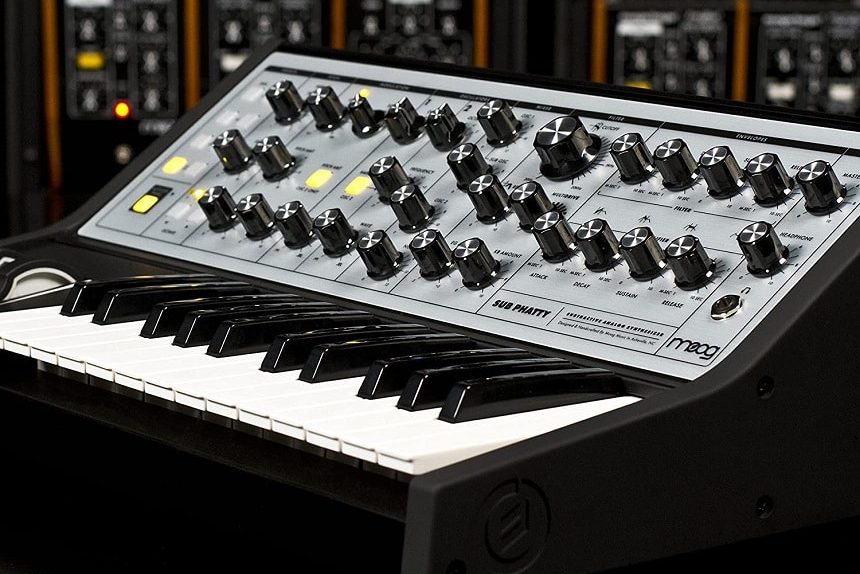
Before you go shopping for a mini synth, you need to decide whether you want an analog or digital one. Digital synths have more advanced features like LED display and are more user friendly compared to analog synths. However, it will take you a while to wrap your head around its operation and programming for you to make the most out of it. The Arturia MicroBrute Analog Synthesizer is a prime example of a digital synthesizer.
Analog synths, on the other hand, have warmer and more satisfying sounds with a great variety as their sound waves are created in analog circuit. If you want the easiest and most logical synth to learn, got for an analog synth with subtractive synthesis like the Moog Sub Phatty 25-Key Analog Synthesizer. They are the best beginner-friendly options. You can as well get digital synths that have analog modelling technology.
Keyboard
It takes a lot to play just about any instrument, and the synth is no exception. How its keyboard feels is extremely important. You can choose light non-weighted keys, especially if you want a highly portable synth. If you are used to playing other instruments like acoustic or electric pianos with weighted keys, you will want a synth with weighted keys that offer a more solid feel on your fingers.
Polyphony
A polyphonic synth can play multiple notes at a go contrary to their monophonic counterparts that can only play one note at a time. The number of voices a polysynth can play is usually indicated in its name. For instance, the
Korg Minilogue 4-Voice Polyphonic Analog Synth can play 4 voices. Most polysynths usually have 4,6,8 or more voices.
Every voice in the polysynth includes an oscillator, an envelope and a filter. This makes them a bit pricier than monophonic synths. Also, monophonic synths are much more compact because they don’t include as much hardware in them.
Mono synths excel at particular types of playing, including basslines, leads, and solos. Polysynths are great for melodies and harmonies. At the end of the day, the benefits of polyphonic synths outweigh mono synths despite their hefty price tag.
Presets
Presets are among the many reasons why you should not get overly fixated on a synth’s number of sounds. Most entry-level synths come with hundreds of preset sounds that are factory-created.
Essentially, go for a mini synth that has a wide range of controls to give you full control. It should have lots of knobs, pedals, wheels, faders and dials so you can change and interact with sounds to achieve the best results.
Sequencer
A sequencer is a device and in some cases an application software that can edit, record, and playback music by handling note and performance information in varying forms including MIDI, CV/Gate, and OSC. With a sequencer, you can play repeating patterns automatically without pressing the keyboard. It is especially handy for beginners who need time to wrap their head around playing the keyboard.
Additionally, a sequencer will help you trigger several instruments at once without touching the keyboard. This allows you to focus on creating the best sounds.
Most synths come with built-in step sequencers or analog sequencers. You can as well opt for the software sequencers that you can control using a graphical user interface or an input device like the MIDI controller.
Oscillator

Synthesizers have voltage-controlled oscillators which convert DC signal from the power outlet to AC signal. Quite simply, the oscillator in your synth produces a simple triangle, sine, saw or square electrical wave that is sent through your speakers and converted into sound.
A voltage-controlled oscillator can produce different pitches according to the voltage coming into it. The voltage determines the oscillator’s frequency. When you trigger a MIDI note of press a key on the synth, a different voltage is fed to the VCO which then affects its pitch.
There is also the Low-Frequency Oscillator that produces the lowest frequency that a person can hear, usually under 20Hz. It’s usually used to modulate other components of the synth-like the VCF, VCO or VCA.
Effects
This is a modifying audio process that overdrives, modulates or applies a spatial quality to an original signal. There are different types of effects, and the more a synth has, the more versatile it is as it offers more variety in terms of sound capability. Luckily, most affordable entry-level mini synths incorporate effects in their build to enhance your sound and add great atmosphere to your music.
Filters
The filter is the feature that best defines a synthesizer’s character. They have some sort of brassy and creamy effect on the synth’s sounds. Seemingly, there is an endless variety and arrangements of filters.
The most common filter is the low-pass filter that allows frequencies below a certain point to pass. The high-pass filter is also common, and it filters out low frequencies but allows high frequencies to pass. Very few synths have the band-pass filter which reduces both high and low frequencies to allow them to pass only at the cutoff point.
Synthesizer with multiple filters like the Korg Minilogue 4-Voice Polyphonic Analog Synth, have them arranged in series so that sounds pass through each one of them. The multi-mode filter style is also very common in modern synths, and it comes with a switch that allows you to choose the different types of filters on the synth.
MIDI input/output
A MIDI interface has inputs and outputs; MIDI IN/MIDI OUT that allow you to send messages to and from MIDI instruments via MIDI cables. They can either be standalone synths or can come built-in your sound card.
The biggest benefit that comes with choosing a synth MIDI IN/OUT is that you will be able to connect to a MIDI which allows you to edit performances easily note by note. You can change your performances’ articulation or even replace the sound that plays them. Elektron Digitone is a prime example of a mini synth with MIDI in/out/thru. You can control much more than just notes if you use MIDI with it.
Connectivity
This is another key metric to consider. Before choosing a synth, you need to consider if you will add more gear to your studio or not. If yes, then be sure to get a synth that maximizes connectivity in its design. Check to see that it has MIDI ins and outs, audio ins and outs and USB connectivity. They will allow you to connect to other gadgets like speakers or even computers.
Dimensions and weight

You have to decide whether you need a synth that will permanently stay in your studio or open you’ll move around with. For the permanent option, depending on the size of your studio, you can go for a large synth as they are easier to work on. For an on-the-go option, you want a compact synth that you can easily throw into your bag. It shouldn’t weigh you down either.
Multi-Timbral
A synth with multi-timbral capability can play different sounds on different MIDI channels. It comes in handy if you’re using a standalone sequencer that can sequence multiple channels. Additionally, the multi-timbral allows you to stack up sounds in that you play different sounds on top of each other with one keypress.






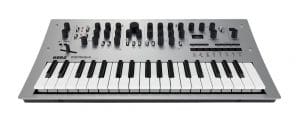



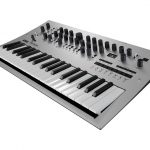
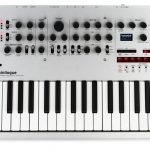
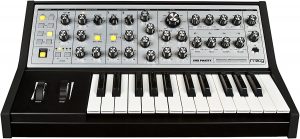


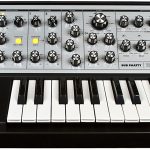
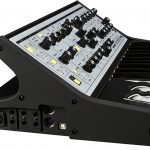
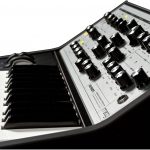

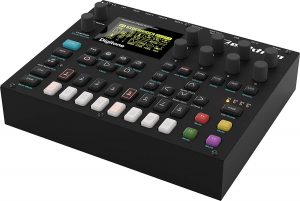

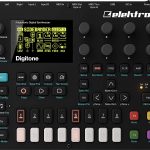

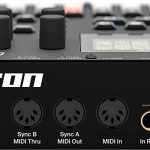
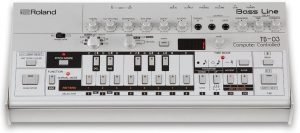

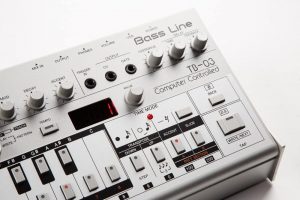
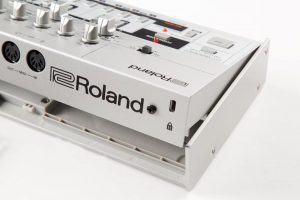

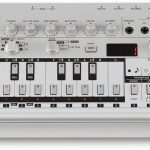
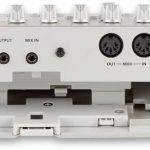
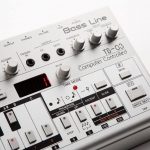
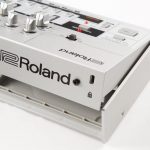

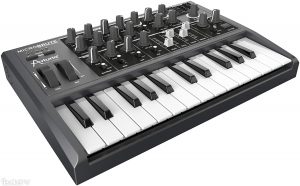


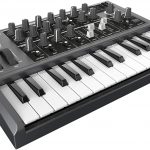
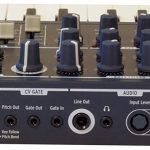












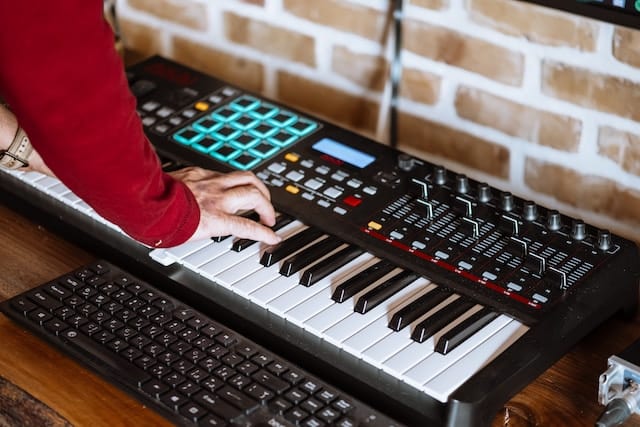


Which mini synth would you recommend for a beginner like me?